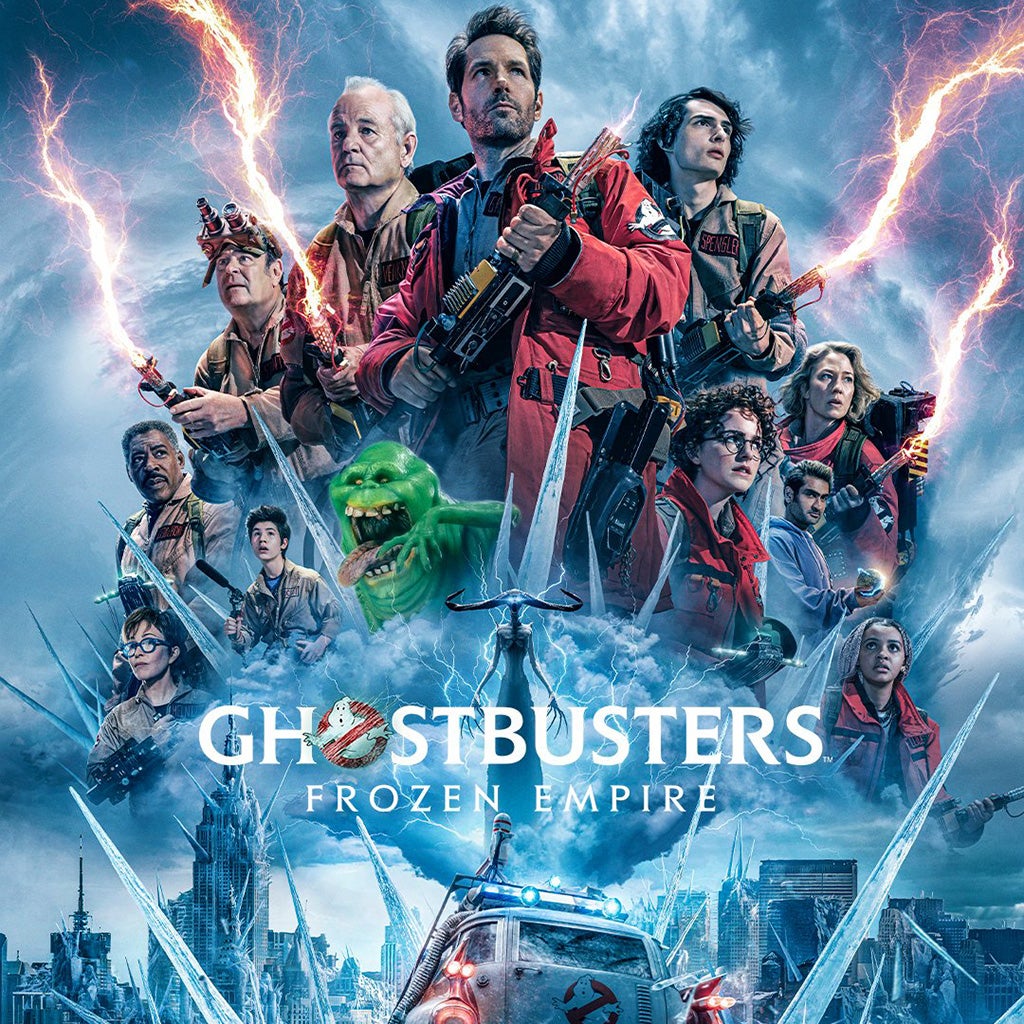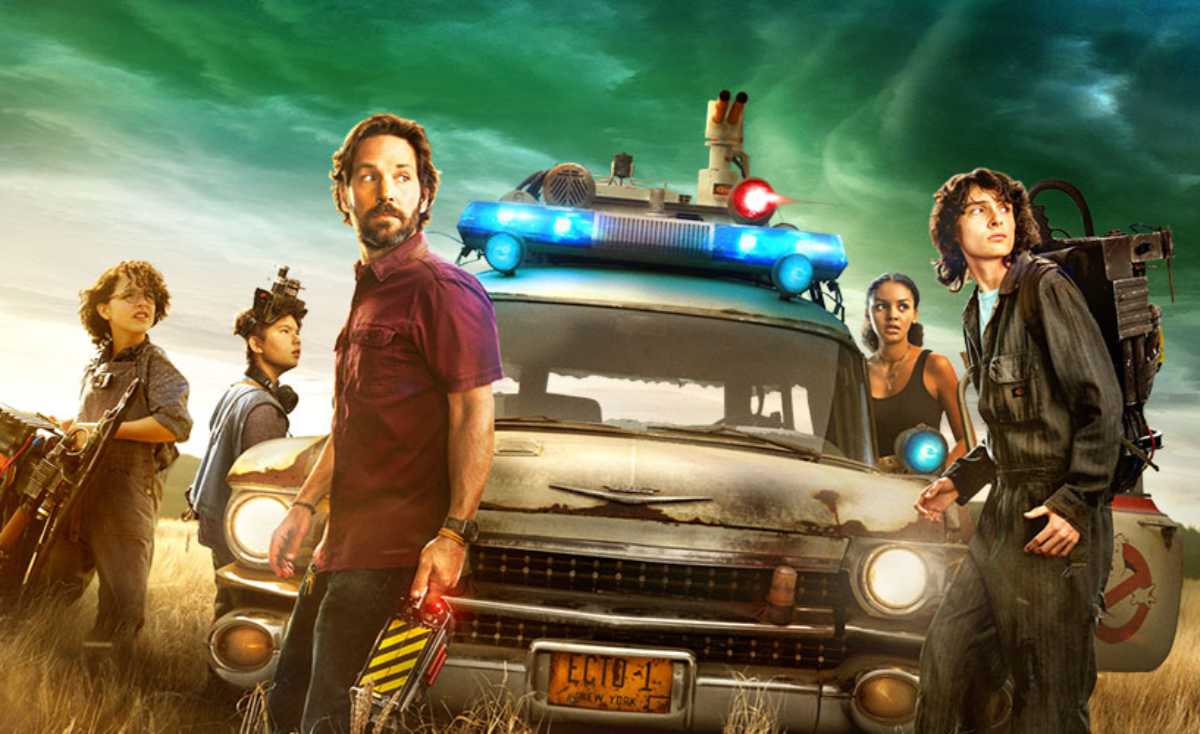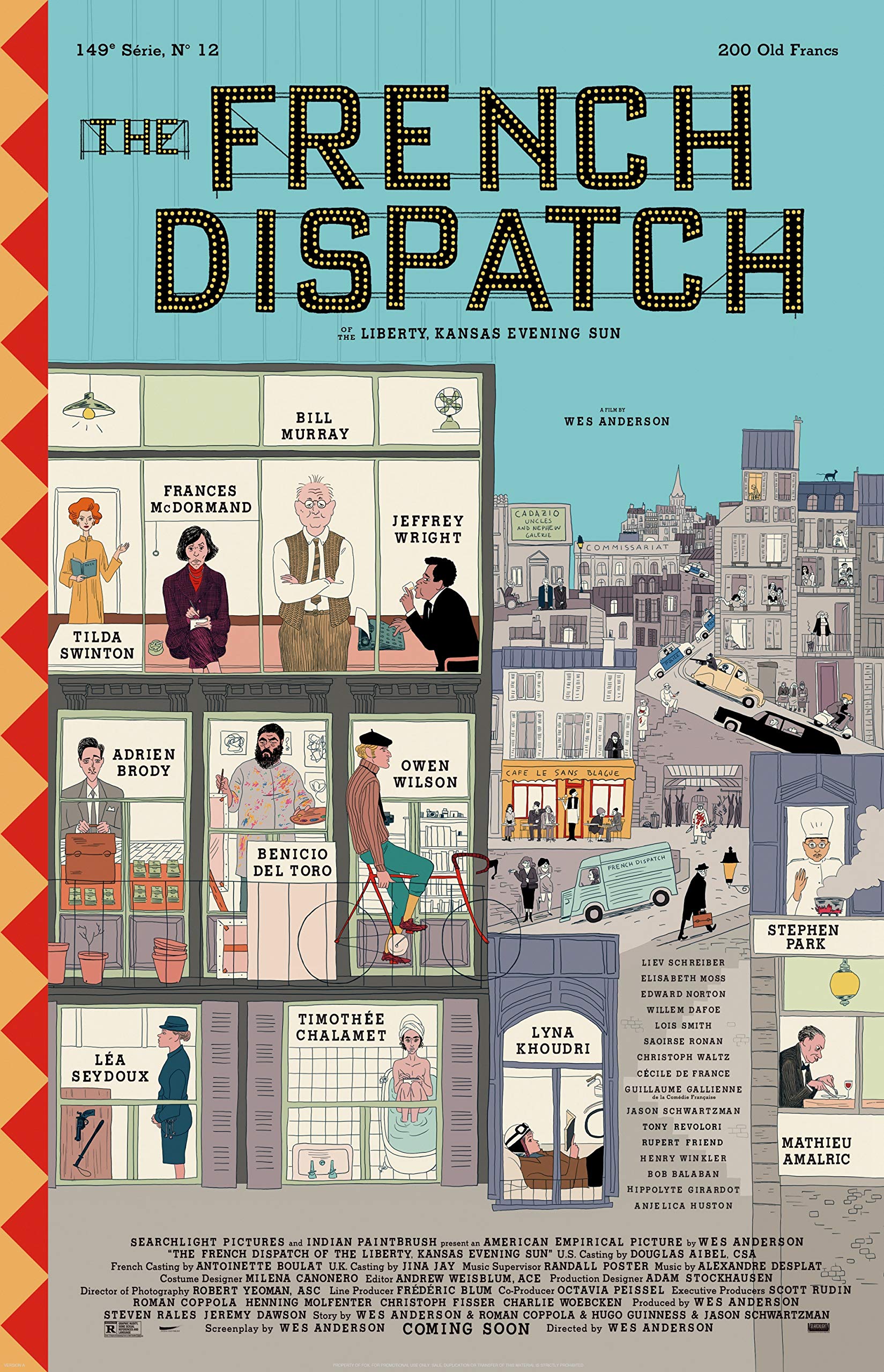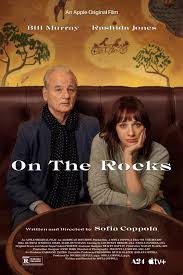Ghostbusters: Frozen Empire
Posted on March 21, 2024 at 12:07 pm
B +| Lowest Recommended Age: | Middle School |
| MPAA Rating: | Rated PG-13 for supernatural action/violence, language and suggestive references |
| Profanity: | Some strong language |
| Alcohol/ Drugs: | None |
| Violence/ Scariness: | Extended supernatural peril and violence, some disturbing images |
| Diversity Issues: | None |

The latest installment of the now four-decades-long saga of the intrepid, firehouse-based, three-generation funny, scary, and then funny again and then scary/funny crew who capture ghosts is much better than the wobbly reboot, with plenty to delight both long-time fans and newcomers. Those who love the original 1984 will be happy to see the more-than-cameos returns of original stars Bill Murray, Dan Aykroyd, Ernie Hudson, and Annie Potts. Walter Peck, the mean-spirited non-believer from the EPA in the first film, is now the mayor, played once again by William Atherton. And some of the ghosts from the original are back, too, including tiny little Stay-Puff guys. And yes, there will be slime.
And, yay, they’re back in New York City! The contrast between the gritty, cynical, material reality of the city and the supernatural images is an essential element of this franchise.
Gary (Rudd) is no longer an unhappy single science teacher; he is happily in a warm, loving, supportive relationship with Callie Spengler (Coon) the daughter of the character played by the late Harold Ramis in the first film, and they are full-time ghostbusters, back in that firehouse, still very cool with the firehouse pole and the tricked-out hearse vehicle. Rudd and Coon have an easy chemistry that adds a quiet counterbalance to the wilder elements of the story.
The kids are older. Trevor (“Stranger Things'” Finn Wolfhard) keeps reminding Gary and Callie that he is 18, but they are not ready to make him a full part of the group. And brainiac Phoebe (McKenna Grace) is still the one who is on top of all the science and engineering but still only 15. Mean mayor Peck threatens Gary and Callie with prosecution for violation of child labor and neglect laws if they allow her to participate in ghost-busting. Gary cares about Trevor and Phoebe but has not figured out how best to relate to them. He wants them to like him so much that he is not comfortable taking on more of a parental role.
The other two young characters just happen to have found their way from Oklahoma to New York City so they can stay in the story. Lucky (a charming Celeste O’Connor) is working at a ghost-investigating lab funded by now-billionaire Winston Zeddemore (Hudson). And Podcast (Logan Kim) is working for OG ghostbuster Ray (Aykroyd), who now runs a curio shop that’s a kind of “Antiques Roadshow” for artifacts containing spirits and demons.
One of those items is a sphere brought to the shop by a low-level slacker named Nadeem Razmaadi (a very funny Kumail Nanjiani) in a box of items from his late grandmother. Like the fast-deteriorating ghost containment and storage unit in the fire station, the sphere has kept inside a terrifying spirit who kills people with ice. You know where this is going.
There will be consultation with experts, including Murray returning as Peter Venkman and New York Public Library expert in ancient languages Hubert Wartzki (Patton Oswalt). There will be confrontations with ghosts we’ve met before and new ones, including a swamp dragon and a lonely teenage chess champion named Melody (Emily Alyn Lind), who bonds with Phoebe when she is feeling abandoned by being told she has to wait three years before she can go back to work.
As the title suggests, and as the Robert Frost poem at the beginning of the movie underscores, this movie’s villain controls ice, which juts out from the ground like spiky frozen stalagmites. The ghosts and special effect and action are all entertaining, the humor keeps things bouncing along, the fan service is ample but not intrusive, and, well, ghost-bustin’ makes me feel good.
Parents should know that this movie has extended and sometimes disturbing supernatural peril, horror, and violence. There are some graphic images and jump scares. Characters use some strong language and there is some crude humor. A character makes a reference her family dying in a fire.
Family discussion: Why was it hard for Gary to be firm with Trevor and Phoebe? What did Phoebe like about Melody? Do you think there are ghosts like the ones in the film? What do you think is the meaning of the famous Robert Frost poem at the beginning of the movie?
If you like this try: the other “Ghostbuster” films, especially the original and the 2016 version with female ghostbusters played by Kristen Wiig, Melissa McCarthy, and Kate McKinnon, and a very, very funny Chris Hemsworth.








